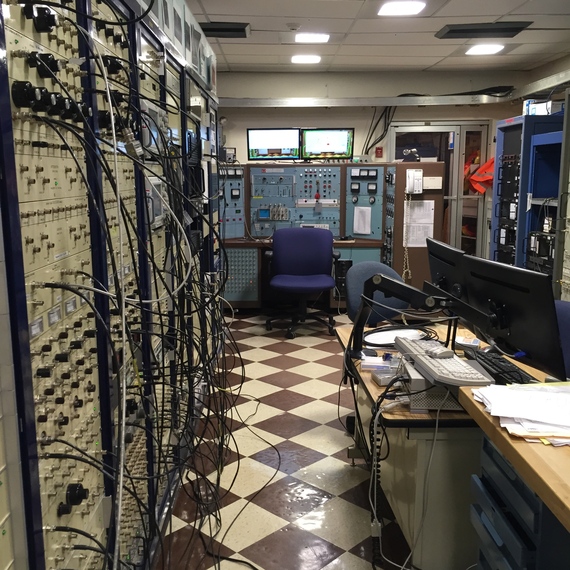When Earthlings finally make contact with an intelligent alien civilization, odds are, the conversation will originate from Puerto Rico's historic Arecibo Observatory, the world's largest single-aperture telescope.



Even if you've seen photos of the telescope's radio dish, it's sheer size - 1000 fit across - must been experienced in person to appreciate. The bowl of the dish is made up of metal mesh, arrayed as a spherical reflector that collects radio waves from all over the universe and focuses them on the Gregorian Sub-Reflector suspended 500 feet above. The deluge of data streams across the gantry into the nearby control room where men and women with doctoral degrees, and kick ass Star Wars Halloween costumes, sift through the noise, listening and looking for... something. Anything; a coherent signal, a chemical signature - an "I'll know it when I see it" anomaly that in all probability would reward it's finder with a Nobel Prize.
Today, Arecibo is the focal point for the three major prongs of Earth's deep space research; Radio Astronomy, Atmospheric Science and Radar Astronomy. And you learn about all of it on your own tour.
Our tour was led by three of the leading space researchers working today, (l-r) Astronomy PhD Patrick Taylor, Andrew Seymour, the Physics Phd and Space & Planetary Science Phd Edgard Rivera-Valentin.

They are each focused on their own speciality, actively teasing out the secrets of the Cosmos, much like Carl Sagan, the Cornell University professor who brought his wonder and excitement of space to the rest of us. Sagan was involved in the early history of Arecibo, which is one of the reasons the wonderful film CONTACT was shot on location here. Another is... there's no place else like it on Earth.

Where do these uber-geniuses come from? The Dish. If you build it, they will come. Arecibo acts like a magnet, drawing in space nerds and crazy thinkers from all over the world to sit behind the wheel and study in its shadow.
On our walk they explained how Arecibo helps find new planets by their 'wobble,' new ways to spot NEO's [near Earth objects] before its too late, and nurture the next generation of scientists. Far as I could tell, they're Magna Cum Laude across the board.
After our tour with the current Wizards behind the curtain, we had an opportunity to talk with a group of high school kids during their summer residency at the dish. Normally, I am extremely cynical about 'these kids today.' But after spending an hour chatting with these kids inside a lab van during a tropical downpour, I'm convinced our future's so bright, I gotta wear shades.

Follow @MarkDeCarlo on Twitter to win travel prizes, get show and travel news and see our original travel videos. Listen to a new show every Thursday @ Orbitz
SPACE PHONE: Puerto Rico's Arecibo Observatory


